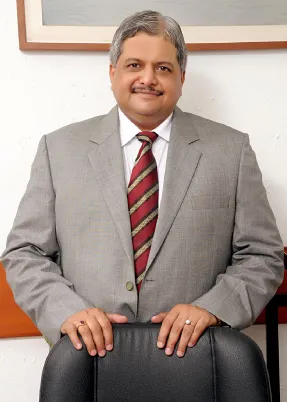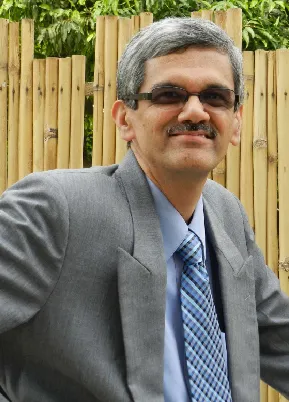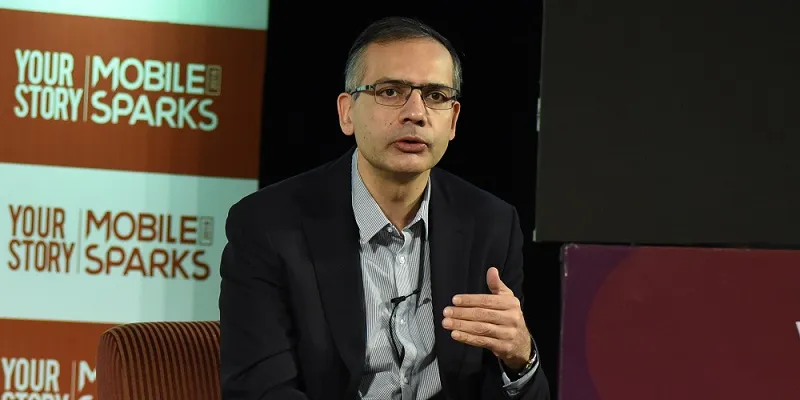Hold with the dirge, the startup song is yet to play out
Even as startup funeral parties become popular, it is worth revisiting a 16-year-old story of an intrepid bunch of people who told the world, “Let not the Internet bubble get the best of us.”
The bells are tolling, all right. As the pallbearers gather to lower yet one more startup coffin into the ground, it seems 2017 is turning out be the year of obituaries.

There’s an all-pervasive sense of gloom and doom. Mass firings, scandals, accusations, conspiracies are all coming out of the closets -- it’s true ‘only when the tide goes out you discover who’s swimming in the nude.’
As one startup founder told me rather poetically -- “the falling leaves on the pavement add to my heartbreak. But I console myself saying spring is not far away.”
He was not just referring to nature’s seasonal cycle.
By its inherent definition, a startup is a fast-growing scalable business. A calendar month in a startup is perhaps equivalent to a quarter or thereabouts in a conventional business. No wonder, then, new success metrics have to be drawn up. Where valuations matter more than just value creation.
While valuation, even though quantifiable, is like the mirage in the desert subject to imaginary metrics, value creation, a more abstract concept, is relatively easier to see.
The strength of three crucial pillars of a startup -- customer, employee, and investor -- is a good starting point to judge value creation.

“There’s a rhythm in what an entrepreneur tries to do -- for her customers, add value to their lives at a decent price; for her employees, ensure a fulfilling career and stuff she learns with them; for her investors, a return on their investments,” says Arvind Krishnan, CEO and Founder of The Fuller Life. And when any one of these pillars shake that rhythm is bound to break.
A dream gone awry
It is not hard to see where it all went wrong. The inflated valuations and subsequent markdowns, the investment freeze, increased cost of customer acquisitions, and the mass firings. You can read about it here, here, and here. It’s like what they say about great haste; it makes great waste.
But even as startup funeral parties are becoming popular, let’s flash back 16 years ago when an intrepid bunch held the first ever pink-slip party in India. Their invitation read: “Let not the Internet bubble get the best of us.”
It was a cold evening on November 2, 2001, and the terrace cafe of Indya.com in Bengaluru’s then quiet suburb of Koramangala was warming up with ex-employees sporting Indya.com t-shirts. They had changed the red colour of the dot in the logo to pink signifying the shift in their status. That evening they partied harder. And a long list of referrals was shared with the employees looking to find new jobs.
For the benefit of millennial readers, who were perhaps in their preteens then, here’s a quick brief on Indya.com.
Indya was founded by Microland’s Pradeep Kar in April 2000 to ride the dot-com wave. Indya had a total investment of $53 million. It was valued at $150 million in September 2000, and by August 2001, it’s valuation was marked down to $15 million. In just a matter of a year-and-a-half, it all came crashing down as the ‘startup’ (it was called a portal then) witnessed mass firing and, eventually, was merged with Rupert Murdoch's Star TV (the largest stakeholder in Indya).
Chasing the elusive metrics
“Indya was a cult. It was a cult starting up and a cult shutdown,” says Sunil Lulla, who was handpicked by Kar to lead Indya as its CEO.
In a conversation with YourStory over the phone, Mumbai-based Sunil, who is now Chairman and MD of Grey Group India, was categorical that no one can compare Indya to anything that is happening now. “We never ran out of money. In fact, we returned most of it to the investors,” he tells me. According to him, the reason Indya shut down was because investors had global pressure to back out.

There are no points for guessing that he still carries the torch for Indya. “In such a short span, we created a brand in Internet business. Did you know we launched Indya (the url indya.com) on February 29, a leap year? And that, when we first went to deposit the $50 million in the State Bank of Karnataka, the manager’s hands were shaking when he took the cheque,” Sunil tells me in his incorrigible style. A media and communications professional, Sunil is well-known in the circle as a maverick leader credited with turning around brands like MTV and Sony Entertainment.
Even today, after all these years, the Indya alumni meet every four years to relive the heady days of the dot-com boom.
“No matter where we are in the world, we come together every leap year to reminiscence of what we built and what could have been,” adds Sunil.
Indya.com was positioned as a one-stop online space for content, shopping, travel, jobs, personal finance and more. It had a 250-strong workforce, mostly out-of-town youngsters who moved to the IT city of Bangalore dreaming of building something new by leveraging the democracy of the Internet.
Arvind was one such young employee. “Hell yeah, it was a fantastic ride. We worked hard and partied harder,” says Arvind, who was among those served the pink slip. He subsequently went on to start his own venture, The Fuller Life, and is also the founder of Runners for Life.
“Things started going south in early 2001. It was becoming evident that we were chasing irrelevant metrics. It was apparent that revenue was not linked in any way to page views or eyeballs,” says Arvind. He might as well be talking about the present scenario. He adds,
“When people spend Rs 2 to earn Rs 1 then something is fishy.”
“News Corp that owned Star wasn’t keen on expanding the Internet business. Instead, it wanted to focus on the TV business,” says Rajiv Vij, Founder and CEO of Carzonrent, also an ex-Indya hand. Rajiv had his own travel venture Net2travel.com, which was merged with Indya, and which it eventually shut down in 2001.
Rajiv adds that “the measure of success became eyeballs and page views, something similar to today’s GMV and acquisition of customer without brand loyalty.”
Cult status
In a way, Sunil’s right when he says Indya was a cult. Living by its maxim of ‘it happens only in Indya’, the brand made The Times of India depart from its 163-year-old tradition to allow, for the first time ever, a full front page advertisement announcing the arrival of Indya.com. Huge billboards screamed the launch of Indya, the red dot on the logo signalling everyone to stop and take notice. Reportedly, the launch party drew up a bill upwards of Rs 4 crore. Remember all this was happening when Rediff was the market leader, with Yahoo revving up at the traffic signal.

But Indya found itself making news for all the wrong reasons -- a swanky office, over-the-roof salaries, huge marketing spends, and lavish parties. Reportedly, for every Rs 50 earned, Indya spent Rs 300. If the investors -- Star had become the major investor after a sell-out by founder Pradeep Kar -- did not sweat over this, then the imminent dot-com bust in the US shores made them pull up their socks. (Despite a request by YourStory, Kar was not available for comment.)
By October 2001, all but 25 employees remained. Star locked up the Cinderella-esque Indya as a mere online adjunct to its television channel. Anu Sharma, the woman who faced the maximum heat as the HR head when the layoffs played out, says, “For the next three months, I could not do anything nor take up a new job. I was so emotionally drained.” She eventually went on to start her own venture, The HRPractice, in Bengaluru.
Despite Sunil and Anu’s claims that they went about the layoffs in a dignified manner, there was collateral damage. “It is not easy firing someone. But we assured the team that the sacking was not a reflection on their ability or professionalism,” she says. All the employees were given a “hefty” severance package and assured of positive references.
Rise of new crop of entrepreneurs
Many employees went on to join other corporations, while some chose to become entrepreneurs.
“Ninety-four entrepreneurs emerged out of the Indya rubble,”
says Sunil, with a hint of pride.
“Indya was a positive experience for me. I learned that there is no growth in a comfortable situation. An entrepreneur needs to have her skin in the game,” says Arvind. There weren’t too many jobs, so he did the next best thing: become an entrepreneur himself. He employs 50 people, and last year, made revenues of Rs 10 crore plus. He chose not to go the VC way, and instead raised money from friends and family and remains largely bootstrapped.

For Lovaii Navlakhi, Founder and CEO of Bengaluru-based International Money Matters, joining Indya was a last-ditch attempt at being a part of the Internet business. “At that time, I was close to turning 40, and had always worked in traditional financial services. I thought Indya was my chance at adventure,” he tells me.
“There was a phenomenal energy at Indya. After six months of my working there, my wife complimented me saying I was looking younger,” he says, and I could almost hear him smile.
Lovaii handled the personal finance section at Indya, and says it was one of the revenue generating verticals. “We just got caught in the investor mindset,” he adds. After the pink slip, Lovaii thought he would join another job, but “I ended up counselling my former colleagues on personal finance and the idea came up why not start my own venture.”
He had two school-going children, and at that point going on his own was fraught with risks. “Whenever we would decide to go out to eat, the family would suggest Sukh Sagar. I later caught on that they were trying to save money,” he says laughing. After every business transaction, he would be asked by his 10-year-old whether it was debt or equity one. “Those were trying times, but it helped us as a family to understand the value in saving and helping each other out,” he adds.
No surprise then that the 10-year-old went on to become an entrepreneur himself. Raashid Navlakhi, 26, is Founder and Chief Design Thinker of iforindya.org, which empowers students and professionals with skills and mindsets for fulfilling careers. And you read that correct; his India is also spelled with a ‘y’.
Of Utopian communities
Though mass firing as the ugly truth of startups makes for good copy, but as we see, it is not its exclusive domain.

“The reason there is so much resentment among startup employees who were laid off is that they feel the situation that they are in is mostly the doing of the founders. They believe it is because of the wrong decisions that the founders took that they have all landed in this mess,”
explains Anu.
While layoffs happen in large corporations, it is not seen as an impulsive decision. Information is gradually communicated and contractual terms are followed by a notice period in place. Moreover, the decision-makers are faceless, sometimes people sitting thousands of miles away. While in startups, the proximity of employees and founders is close and the employees can see there’s an error in judgment.
“Whether a startup or an established company, plans do go awry. Often, scaling down in the immediate term enables sustaining the business over the longer term. And, very often, marketing and salary budgets get impacted the most,” she says.
Deep Kalra, Founder and Group-CEO of MakeMyTrip, who rode the dot-com boom and bust wave successfully, gives a ready reckoner to founders facing the heat of the present situation. He told YourStory that startups should
“Hire right by keeping a close consideration of business goals. Don't get carried away and overbuild the team by investing in too many 'heavyweights' on the back of a couple of good months and funding."
He adds, "Be prudent and conservative while building the team. Things can turn topsy-turvy for multiple reasons. Build a healthy and transparent culture, where every team member is aware of company goals, objective and strategy; and in line, completely understands his/her role. While one may find themselves focussing on just the company milestones in the beginning, it is, however, also important to focus on training and development of your team right from the start. It will ensure that as the company matures, the team also grows and is able to evolve in sync with the changing needs of the company.”

A recent essay I read on Aeon, titled, ‘Utopia Inc’, questions what makes the difference between failure and success of Utopian communities. Though I admit I’ll need a second read to comprehend it in detail, what caught my attention was the comparison to startups. It says, “... the more relevant drivers that cause many communities to unravel sound more like the challenges afflicting any organisation today: capital constraints, burn-out, conflict over private property and resource management, poor systems of conflict mediation, factionalism, founder problems, reputation management, skills shortage, and failure to attract new talent or entice subsequent generations.”
It is said Utopian communities are like most startups -- short-lived.
If anything, the Indya.com example shows how short-lived startups themselves aim to be Utopian communities and inherently contain the seed that can sprout the culture of value-creation, only if they can look beyond valuation.
“Today, young people read about fund-raising by others and want to become entrepreneurs themselves. It does not work like that. You need to have a deep understanding of your domain, a passionate zeal, and be aware of what you are getting into,” says Rajiv. He should know; he’s risen from the ashes two times over.







